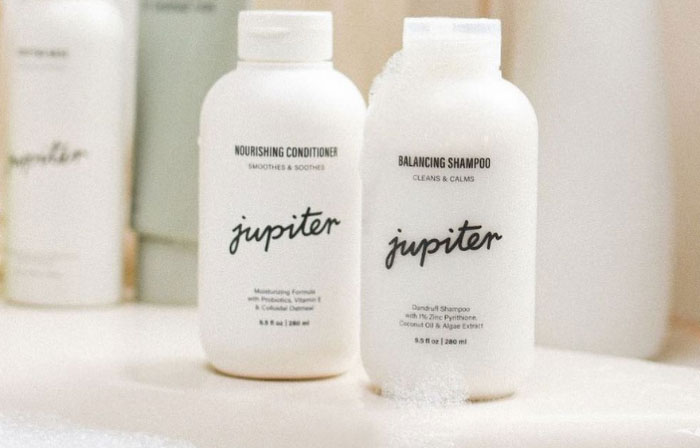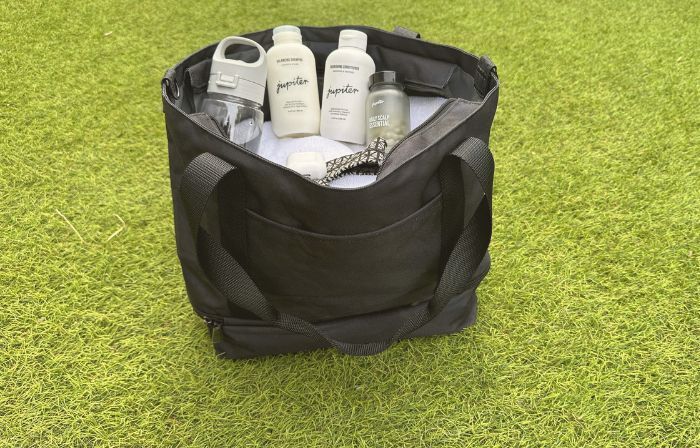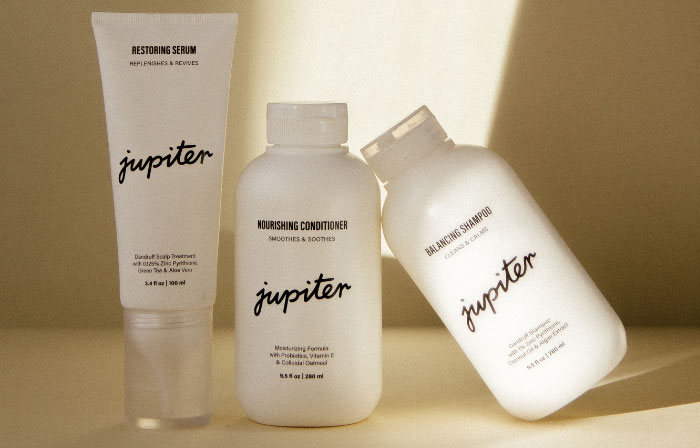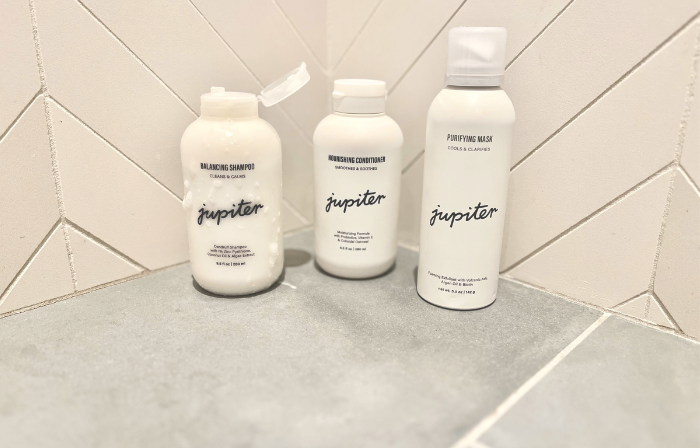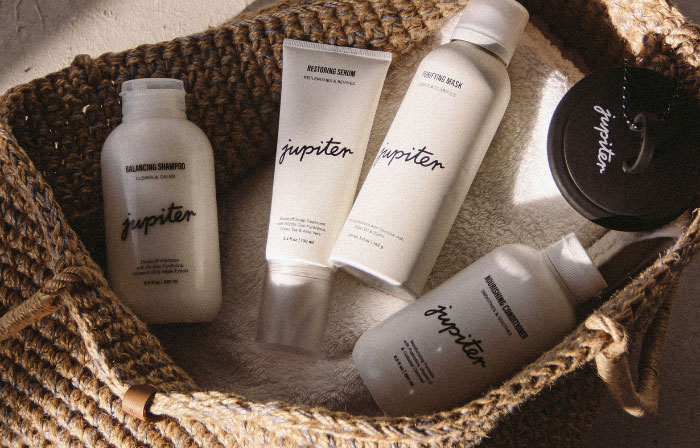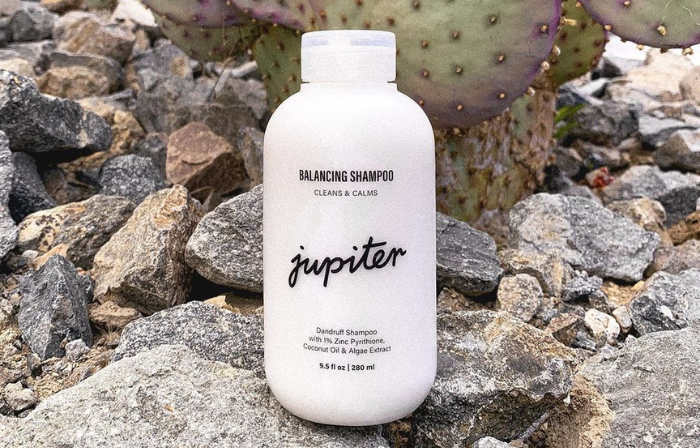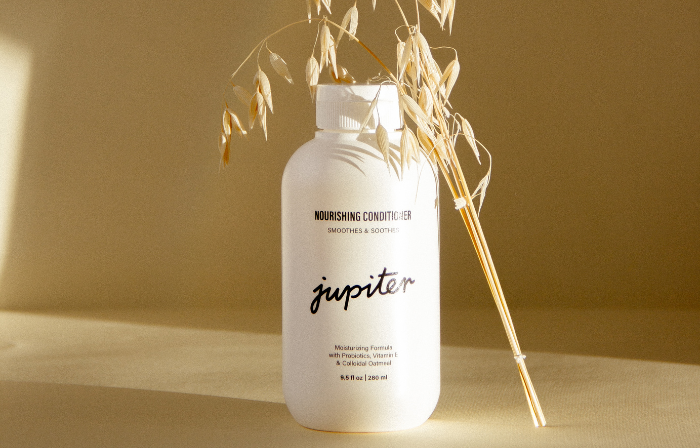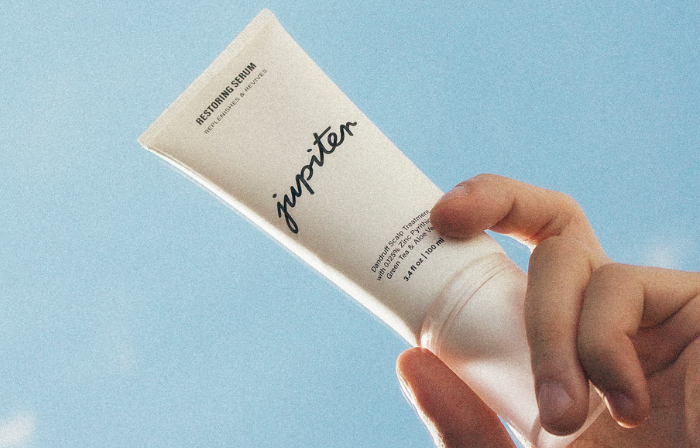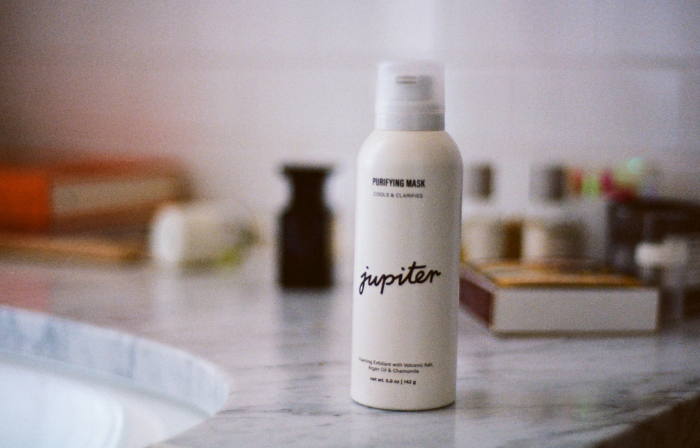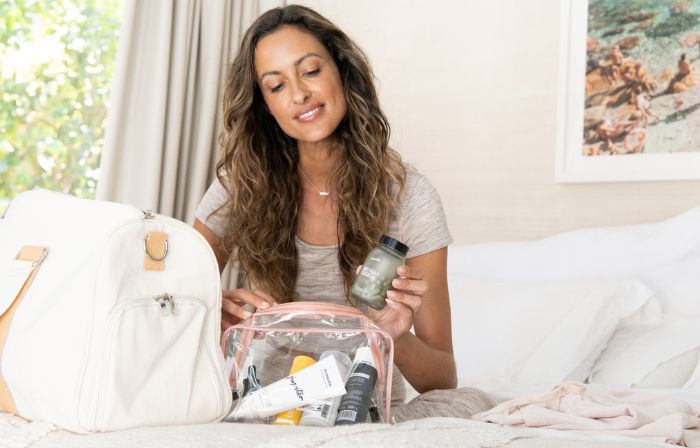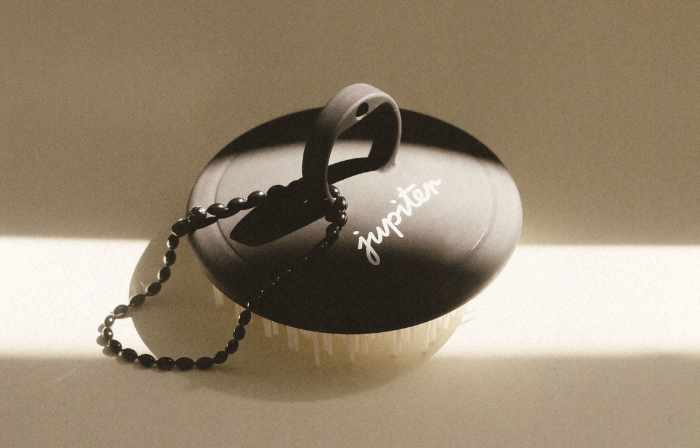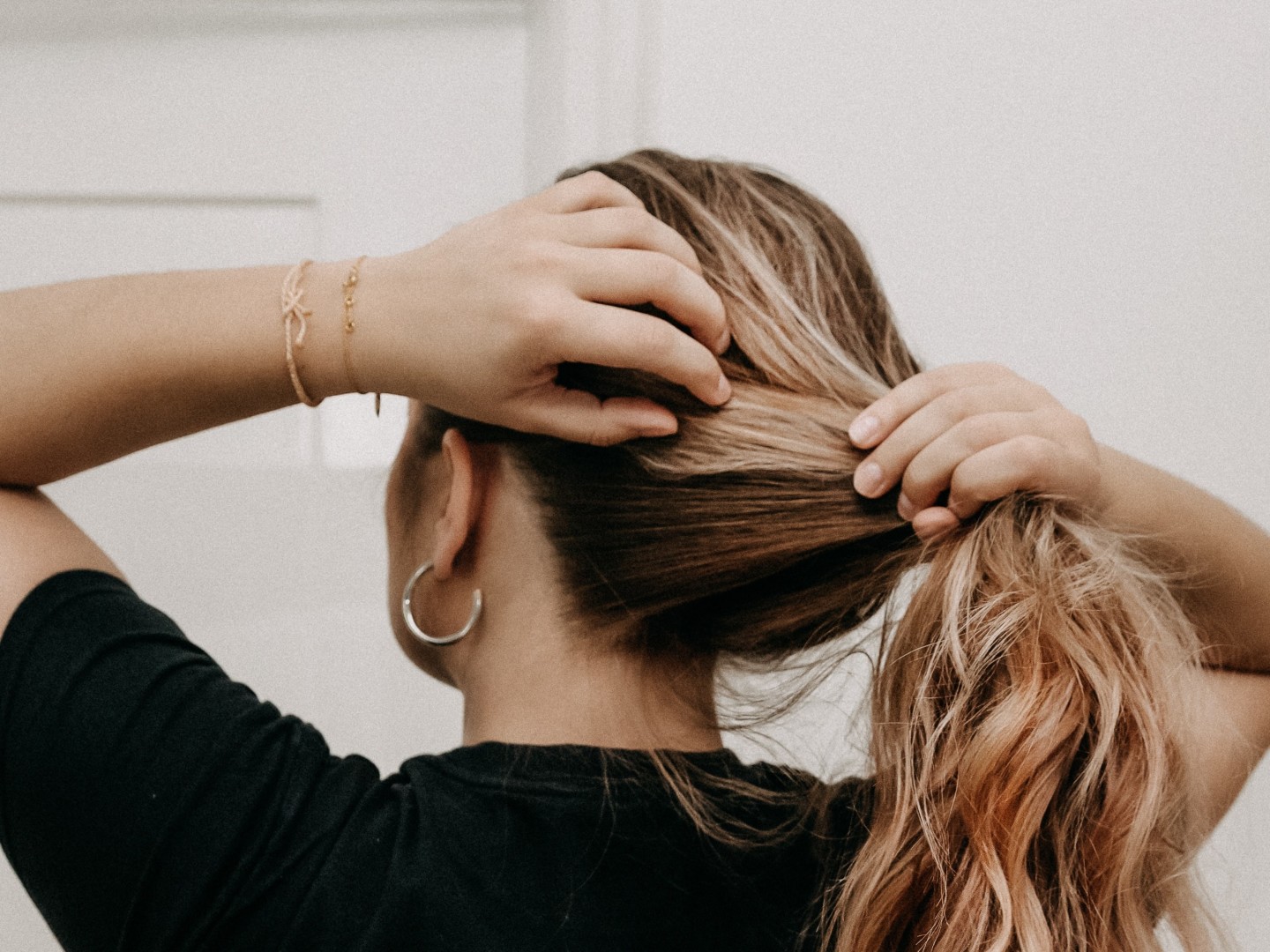🫶🏻 OUR 5% PLEDGE TO HER
#STRONGHERTHANYESTERDAY - WE DONATE 5% TO WOMEN-DRIVEN CHARITIES. LEARN MORE.
The accumulation of oil on the scalp results in sebum (oil) buildup. This accumulation may cause flakiness, irritation, or swelling of the hair follicle. We will discuss everything you need to know about what sebum buildup looks like and how to rid your scalp of it once and for all.
What Is Sebum & What Is Its Purpose?
Sebum is also known as oil. It is your body’s natural oils or lipids, and it consists of squalene, wax, cholesterol, esters of glycerol, and fatty acids. Triglycerides and fatty acids account for over 50 percent of the makeup of sebum.
Sebum naturally protects, coats, and moisturizes your skin and scalp. It is produced in the sebaceous glands that are found all over the surface of your body, except for the palms of your hands and the soles of your feet. Sebaceous glands mainly cover the scalp and face.
Sebum accumulation on the scalp occurs when too much sebum builds up. It can cause irritation, redness, and inflammation of the hair follicles.
What Is Sebum Buildup?
Sebum buildup is the accumulation of your body’s natural oils on your scalp. This sebum accumulation occurs when your hair and scalp go a bit longer between shampoos or if you’re not using the right hair care products for your hair and scalp type.
Sebum buildup is common and easily preventable with the proper hair care regimen and products.
What Causes Sebum Buildup?
The exact causes of sebum buildup are unknown. However, certain factors may increase sebum production and build-up on the scalp. The build-up is either caused by hair care and styling products or other naturally produced substances. Build-up on the scalp may start to flake off, appearing in your hair and often on your shoulders.
Hair Care & Styling Product Buildup
Hair care products work wonders for keeping your hair moisturized, volumized, thicker in appearance, and more textured. However, these products can build up on the scalp with continued use.
Some of the common hair styling products that cause buildup are:
Conditioner and hair cream
Pomade
Gels and creams
Foams
Hair putty or fibers
Naturally Produced Substance Buildup
In addition to product buildup, substances produced naturally by our body can build upon the scalp. These natural substances include:
Sebum (our body’s natural moisturizer)
Sweat
Dead skin cells
Some other naturally occurring factors may also contribute to excessive sebum production.
Five Natural Factors That May Contribute to Excessive Sebum Production
Some factors may contribute to the likelihood of developing an increase in sebum production. These factors include hormonal imbalances, metabolic disorders, digestive problems, poor scalp hygiene, and the accumulation of bacteria or fungi that irritate the scalp.
The amount of sebum a person produces varies in their lifetime. However, it increases during puberty and decreases again during menopause for women or in a man’s sixth and seventh decade. Let’s look at some of the factors that contribute to excessive sebum production.
Imbalance in Hormones
Thyroid and pituitary hormone production imbalances are known to increase sebum production. According to a recent study, sebum excretion rates were measured in patients before and after treatment for hypothyroidism. The study reveals that sebaceous glands react to the thyroid hormone within the hypothyroid range, thus increasing sebum production.
Digestive Problems
The chemical makeup of sebum changes with liver problems and intestinal issues. Thus, sebum becomes ineffective in safeguarding the hair, skin, and scalp. It is known that the brain-gut-skin axis works together and has a systemic effect on bodily tissue lipid levels and pathogenic bacteria, among other things.
Metabolic Disorders
We are all aware that eating a diet high in saturated fats is not ideal for a healthy lifestyle. It affects the metabolic processes, digestive system, and increases sebum production. This excess sebum production can cause hyper seborrhea, a component of scalp buildup.
Poor Scalp Hygiene
An imbalance in sebum and scalp buildup can be a result of how often the hair is washed and which hair care products are used. Washing your hair less often will lead to a buildup of sebum that may cause scalp irritation and slow the natural hair growth process.
Microorganisms
The accumulation of bacteria and fungi irritates the scalp and can alter the composition of sebum. This altering leads to hyper seborrhea (overproduction of sebum).
What Does Sebum Buildup Look Like?
Sebum buildup appears as white or yellowish oily residue on the scalp. It sometimes produces flakes on the scalp and may be mistaken for dandruff, scalp eczema, or psoriasis.
If your scalp becomes crusty, uncomfortable, or if you have fluid or pus-filled pockets, this may be an indicator of a more severe issue that should be discussed with your dermatologist.
Sebum buildup is common and easily preventable with the proper hair care regimen and products.
What Complications Arise From Sebum Buildup?
Long-term scalp neglect leads to complications such as hair loss, acne, seborrheic dermatitis, and oily dandruff.
When your scalp’s microbiome is out of balance, Malassezia may develop. Malassezia is fungi that are naturally found on the skin, and its overabundance causes irritation, flaking, and itching.
The most efficient way to prevent these from occurring is to care for your scalp with the proper hair care products.
How to Get Rid of Sebum Buildup
Mild scalp buildup is treatable at home with hair products that contain Zinc Pyrithione. You can do other things at home to help prevent scalp buildup and irritation, such as:
Brush your scalp and hair frequently to loosen buildup as it occurs, and even prevent buildup in the first place. For best results, use a Scalp Brush that is specially designed to target buildup.
Use Jupiter’s Restoring Serum scalp treatment to relieve and control redness, itching, and flaking between washes. This serum contains Zinc Pyrithione, known to support the control of dandruff, which can help prevent buildup.
Find a hair wash routine and stick to it. We recommend shampooing 3-4x per week, and following with conditioner after each wash.
Treat your scalp to our Purifying Mask. This once a week clarifying mask removes buildup and impurities, moisturizes the scalp, and leaves your hair feeling fresh.
How to Prevent Sebum Buildup
Proper hair care is essential to preventing sebum buildup on the scalp. You can change a few habits to support a healthy scalp and hair.
Reduce the amount of styling products you use on your hair and scalp.
Avoid harsh chemicals such as perms, bleach, and dyes on the scalp.
Wear a swimming cap when swimming to avoid excess exposure to chlorine and other harsh chemicals.
Rinse your hair well after shampooing to ensure you’ve removed all residue and shampoo often.
Inspect your scalp for symptoms such as redness, flaking, and greasy patches.
What Is Zinc Pyrithione & What Does It Do?
Zinc pyrithione works by combating fungal growth. It increases the cellular levels of copper and damages iron-sulfur protein clusters that are vital for fungal growth. Studies prove that a hair care protocol involving anti-dandruff products containing Zinc Pyrithione effectively fights the symptoms of flaking, redness, or scalp irritation.
How To Use Our Balancing Shampoo & Restoring Serum?
Jupiter’s Balancing Shampoo and Restoring Serum are scientifically formulated with Zinc Pyrithione to combat and help eliminate dandruff and seborrheic dermatitis, leaving your scalp flake-free and fresh. These hair care products address the symptoms of dandruff, such as itching, redness, and flaking.
Jupiter Balancing Shampoo
Our Balancing Shampoo is a soothing cleanser that targets flaking and irritation with the active ingredient Zinc Pyrithione. It also reduces hair breakage by 30 percent while it calms and moisturizes the scalp. It’s formulated to work best with the our Nourishing Conditioner to add moisture to your scalp and hair after the shampoo clears buildup and minimizes excess sebum – leaving your hair and scalp clean, fresh, and flake-free.
Jupiter Restoring Serum
Jupiter’s Restoring Serum is ideal for those who wash their hair less frequently, have an oily scalp, or have more severe flaking. The leave-on serum is formulated with 0.125% Zinc Pyrithione to relieve and control scalp itching, redness, and flaking.
This powerful restoring serum is also formulated with niacinamide (helps control oil and reduce sebum production), pea protein (protects and restores damaged hair, reducing breakage), and aloe vera juice (soothes dry, itchy scalps and naturally prevents greasiness) along with a host of other natural ingredients that leave your scalp balanced and feeling refreshed.
Conclusion
Sebum production increases with hormonal imbalances, metabolic disorders, poor hygiene, and many other reasons we reviewed in this post.
Sebum buildup occurs when excess oils on the scalp are not sufficiently removed, this buildup up often leads to dandruff, irritation, and itching.
Keep your scalp clear and in balance with Jupiter’s line of scalp healthy hair care. Take our quiz to find the right products for your scalp.
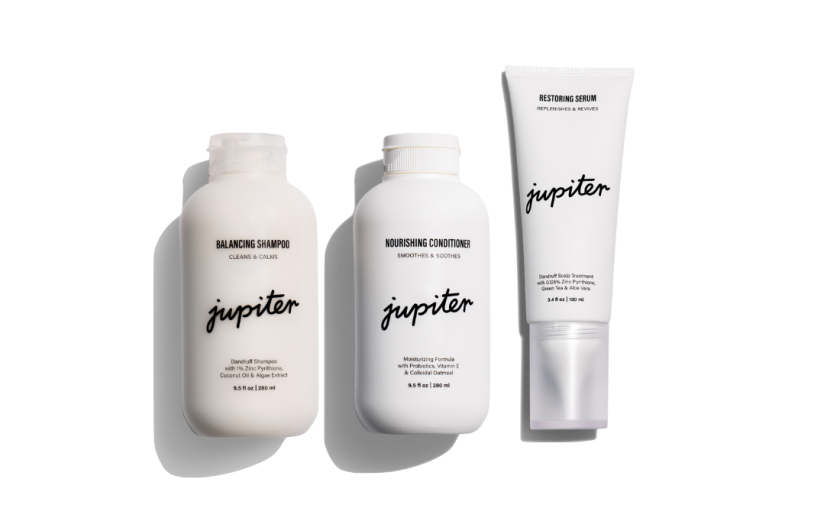
The award-winning medicated Shampoo and Serum target your flaking, and the Conditioner keeps your locks bouncy and beautiful. Safe for everyday use. Consider the Oil Control + Exfoliation Set if you're looking for maximum control and comfort.
Travelling? Check out our Weekender Capsules for on-the-go scalp care.
